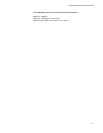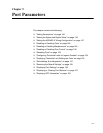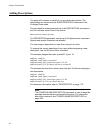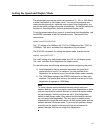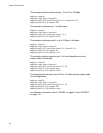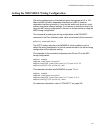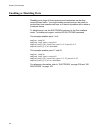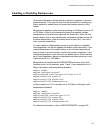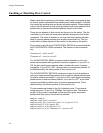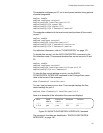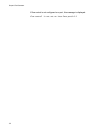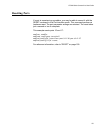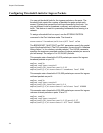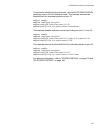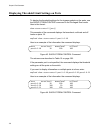
AT-9000 Switch Command Line User’s Guide
149
Enabling or Disabling Backpressure
Ports use backpressure during periods of packet congestion, to prevent
packet overruns. They use it to stop their link partners from sending any
further packets to enable them to process the packets already in their
buffers.
Backpressure applies to ports that are operating in half-duplex mode at 10
or 100 Mbps. A port that is experiencing packet congestion initiates
backpressure by transmitting a signal on the shared link. When the link
partner detects that its own transmission has become garbled on the link,
it ceases transmission, waits a random period of time, and, if the link is
clear, resumes transmitting.
You can enable or disable backpressure on ports where you disabled
Auto-Negotiation and set the speeds and duplex modes manually. If you
enable backpressure, the default setting, a port initiates backpressure
when it needs to prevent a buffer overrun from packet congestion. If you
disable backpressure, a port does not use backpressure. (Ports that are
set to Auto-Negotiation always use backpressure when operating in half-
duplex mode at 10 or 100 Mbps.)
Backpressure is set with the BACKPRESSURE command in the Port
Interface mode. In this example, ports 11 and 12 are manually set to 10
Mbps, half-duplex, with backpressure enabled:
awplus> enable
awplus# configure terminal
awplus(config)# interface port1.0.11,port1.0.12
awplus(config-if)# speed 10
awplus(config-if)# duplex half
awplus(config-if)# backpressure on
In this example, port 12 is manually set to 100 Mbps, half-duplex, with
backpressure disabled:
awplus> enable
awplus# configure terminal
awplus(config)# interface port1.0.12
awplus(config-if)# speed 100
awplus(config-if)# duplex half
awplus(config-if)# backpressure off
For reference information, refer to “BACKPRESSURE” on page 166.



